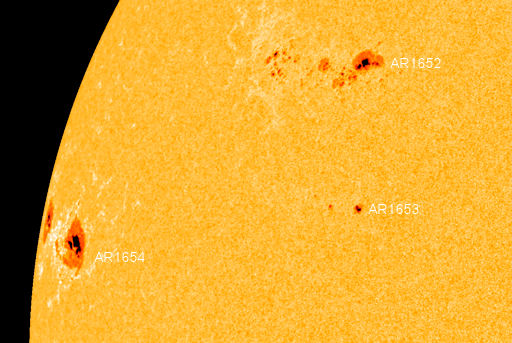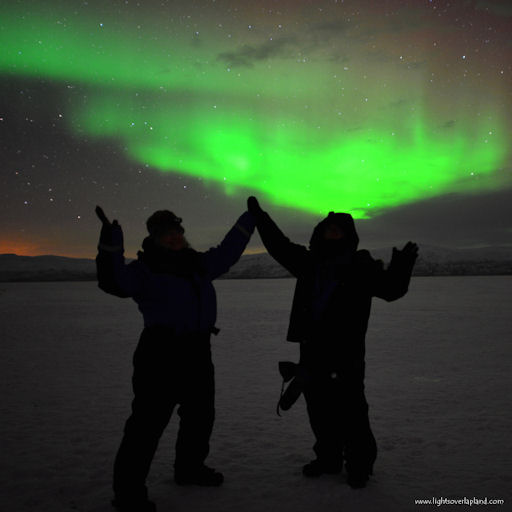Listen to radar echoes from satellites and meteors, live on listener-supported Space Weather Radio. | | |
SOLAR VARIABILITY AND TERRESTRIAL CLIMATE: A new report issued by the National Research Council, "The Effects of Solar Variability on Earth's Climate," lays out some of the surprisingly complex ways that solar activity can make itself felt on our planet. Get the full story from Science@NASA.
BIG SUNSPOT: A very large sunspot is emerging over the sun's eastern limb. Numbered AR1654, it consists of two dark cores each 4 or more times wider than Earth. NASA's Solar Dynamics Observatory took this picture during the early hours of Jan. 9th:

So far the sunspot is relatively quiet, producing only a smattering of low-level C-class solar flares. We will know more about AR1654's flare-producing potential in the days ahead as the sunspot turns toward Earth. A direct view will reveal what kind of magnetic field the sunspot posseses, which is a key requirement for flare forecasting. For now, NOAA forecasters are estimating a 35% chance of M-class flares and a 5% chance of X-flares during the next 24 hours. Solar flare alerts: text, voice.
Realtime Space Weather Photo Gallery
AURORA WATCH: Mild but effective gusts of solar wind are buffeting Earth's magnetic field, sparking auroras around the Arctic Circle. Last night in Abisko National Park, Sweden, aurora tour guide Chad Blakley received a grand display for his clients:

"Tonight was the first night of our January Aurora Photo Expedition and I am happy to report that all eight of our guests were able to see and photograph a very nice aurora display in the skies above Abisko National park," says Blakeley. "The lights started around 7:00 PM and continued to dance in the sky until we were all too tired to carry on. We are hopeful that the next few days will continue to impress!"
He could get his wish. A minor stream of solar wind flowing from a hole in the sun's corona is due to hit Earth's magnetic field on Jan. 9-10, producing a display to keep the tour guides busy. Aurora alerts: text, voice.
Realtime Aurora Photo Gallery
Realtime Meteor Photo Gallery
Realtime Noctilucent Cloud Photo Gallery
[previous years: 2003, 2004, 2005, 2006, 2007, 2008, 2009, 2011]
Potentially Hazardous Asteroids (
PHAs) are space rocks larger than approximately 100m that can come closer to Earth than 0.05 AU. None of the known PHAs is on a collision course with our planet, although astronomers are finding
new ones all the time.
On January 9, 2013 there were 1366 potentially hazardous asteroids.
Notes: LD means "Lunar Distance." 1 LD = 384,401 km, the distance between Earth and the Moon. 1 LD also equals 0.00256 AU. MAG is the visual magnitude of the asteroid on the date of closest approach. | | The official U.S. government space weather bureau |
| | The first place to look for information about sundogs, pillars, rainbows and related phenomena. |
| | Researchers call it a "Hubble for the sun." SDO is the most advanced solar observatory ever. |
| | 3D views of the sun from NASA's Solar and Terrestrial Relations Observatory |
| | Realtime and archival images of the Sun from SOHO. |
| | from the NOAA Space Environment Center |
| | the underlying science of space weather |

